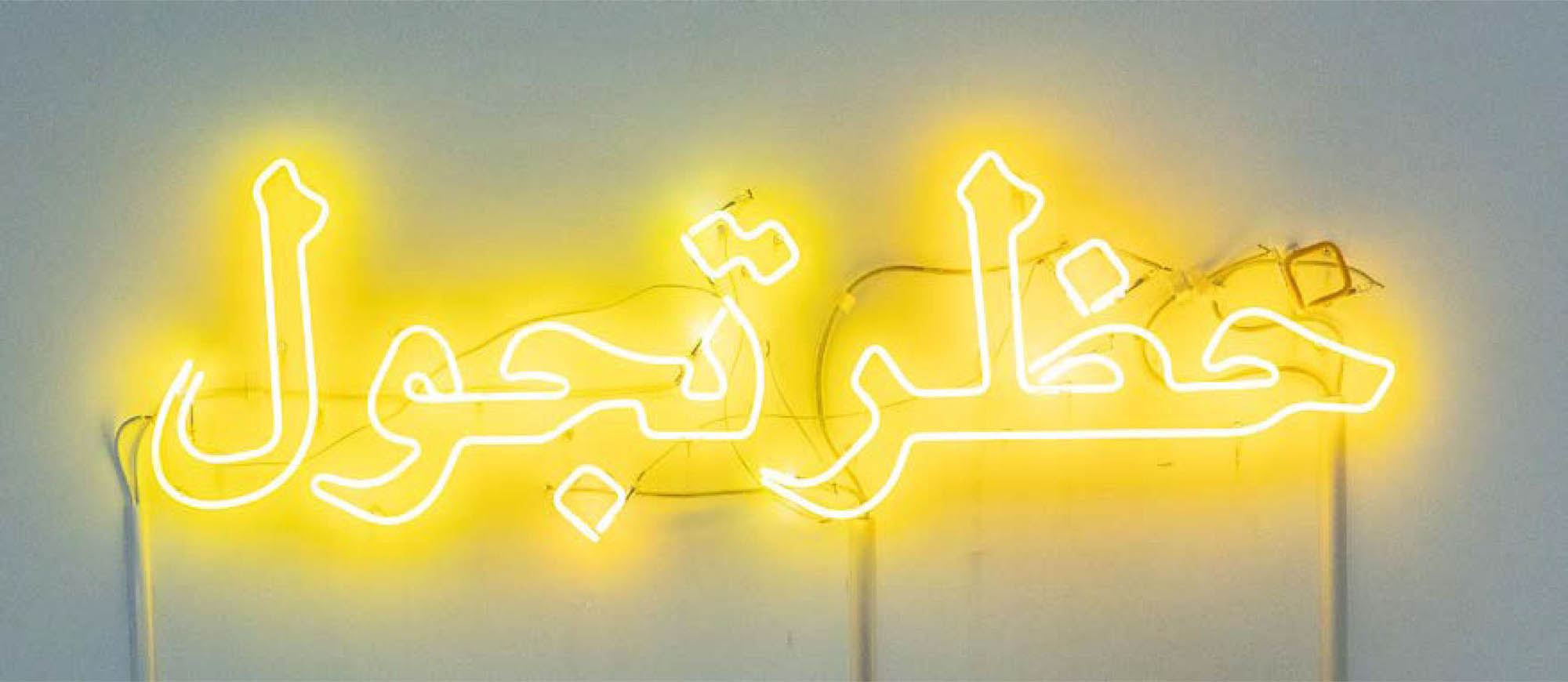Light Within and Light Without
God Is Alive, He Shall Not Die (Blue) by Nasser Al-Salem. 2012. Neon light on mirror 120x120cm. Courtesy of the artist.
Nasser Al-Salem is an artist in Arabic calligraphy. He describes himself as “a person who lives and strives to give life to calligraphy in the contemporary world”. His passion existed before he even could develop his masterful skill, practicing with whatever samples he could find until he was able to attend classes with masters like Ibrahim Alarafi.
Eventually, Nasser saw “the potential of experimenting and contemporizing calligraphy”. He used the rules of art and broke them to explore the potential of calligraphy.
At Art Dubai in 2009, he started questioning the classism of calligraphy and the connection to Islamic art and realized that he had more to give: “Historically, experimentation was the norm. Contemporarily, the limitation of the conceptual narrative and of the creativity surrounding calligraphy was an area of contention, which may cause the art to die off as there is no experimentation or expansion.”
Nasser’s creative output changed after that, starting with Zamzam and continuing to pieces like God is Alive, He shall not Die and Curfew, Risk of Transformation. His work is no longer limited by rules, materiality, or expectations, nor does he get inspiration from a singular source. According to his experience, “the sentence leads the creative process and dictates the materials and the concept.” This includes light. To Nasser, “light is one of the most important mediums to explore concepts in art because we all need light to live, grow, and exist. This includes all life forms.”
What is light but a reflection of who we are and how we exist in the world. It was Nasser’s first time using neon and a mirror to create this artwork. Created in 2012, it is the work with which he challenged himself.
“Being able to write Allah in thulth in the correct and nearly perfect way is the ultimate proof of one’s ability as a calligrapher.” When dealing with the word, Nasser wanted to express his unique relationship with
the word and his intimate relationship with God. “God is light, he is named light, he has created light, and he exists infinitely.” Nasser explained that the use of a mirror creates a recurrence that never ends.

Curfew-Risk of Transformation
The pandemic affected how we interact with the world and this neon sign reminds us of the experience of when the whole world experienced extreme change. “Of course, many people wished for a return to normality, but things have truly changed, like the introduction of virtual meetings as a norm.”
Although it is reminiscent of his work Arabi/Gharbi, the use of flickering light shows a different word depending on the position of the dot on the words. With a flick of a switch, he created an artwork that
represents the fragility of our state during that year. This switch changes the meaning of the words from Curfew to Risk of Transformation. It raises the question: what are the risks of transformation from the curfew and, in extension, the pandemic? Nasser’s advice to anyone who wishes to become an artist is to “love what you do and practice what you love, develop it further, and work through successes and failures.” Art is the space where you find yourself and discover yourself and the people around you.
The artwork reflects on the cyclical nature of spiritual pursuit and the balance of universe. These seven rotating circles, each containing an extract from a Quranic verse in Kufic script, celebrate the wonder of the universe. Nasser Al-Salem chose the number seven to reflect both the famous pre-islamic poems known as Mu’allaqat —believed to have been hung on Makkah’s Ka’ba—and number of tawaf [circumambulation] performed during Haj. The artist reflects over the circular motion of tawaf like the earth’s rotation, the moon’s orbit around the earth and the path of both around the sun.
He said: “All I can do is what I always do during times of confusion or uncertainty; I look to the Qur’an for answers.”

‘An Adornment of Stars,’ by Nasser Al-Salem from Saudi Arabia. 2014. Video projection. Part of the lthra Art Collection and was on display at WASL-Beyond the Pen exhibit at Ithra.


